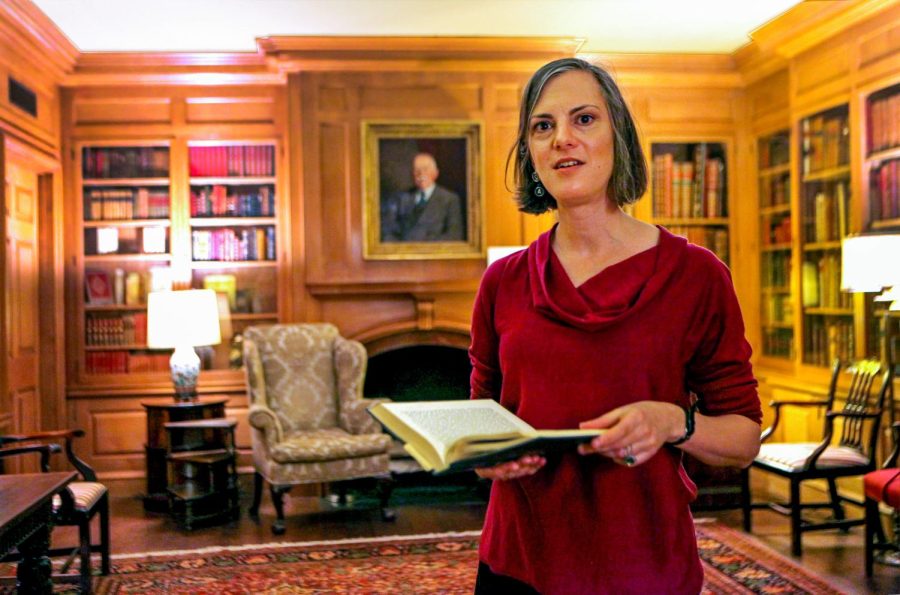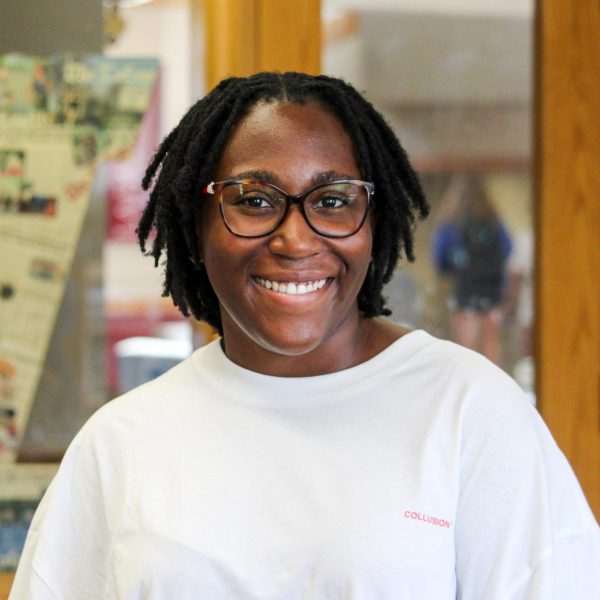From communities of book lovers on Instagram to aesthetic Zoom bookshelf displays, the COVID-19 pandemic brought books back into style.
On Monday, author and book historian Leah Price asked Lafayette students to look at their connection with reading during the pandemic at an event presented at Skillman Library. Price spoke as a part of the Paul and June Schlueter Lecture in the Art and History of the Book, which provides the opportunity to study books as objects and artifacts.
Price, who is known for her books “What We Talk About When We Talk About Books” and “How to Do Things With Books In Victorian Britain,” has a keen interest in the many ways that readers have interacted with books over time. She began her lecture by talking about the overall changes in book sales that retailers saw in the first year of the pandemic and the struggles that came with this.
She discussed that, while books had seen a boom in popularity and sales, retailers had to figure out where to put books. They couldn’t be in the front of a Walmart or grocery store, but they made too much money to be thrown at the back of the store. Not only were physical book sales increasing, but e-books and audiobooks had also skyrocketed in popularity. While this could have been attributed to portability concerns pre-pandemic, Price found that there was an increase in long-form listening.
Despite this, many readers are hesitant to see their audiobook consumption as actual reading. Professor and Head of English Christopher Phillips, who co-sponsored the event, had his own thoughts about the conflicting feelings that many have when it comes to audiobooks.
“Audiobooks are more automatic and I think that might be a big reason why people hesitate to call audiobooks ‘reading,'” he said. “It’s like when the companies who invented cake mixes in the mid-20th century figured out that housewives would only be comfortable using them if they cracked an egg into the mix. Powdered eggs could easily be added to the powdered everything else, but women wouldn’t buy the mixes if they didn’t feel like they were cooking.”
“It could be that turning a page of a book is like cracking the egg in a cake; it helps us feel that we’re reading,” Phillips continued.
Despite this, Price discussed that physical copies of books would become important in a multitude of ways. More time spent at home meant that people had a lot more free time, making cookbooks and children’s books a lot more popular. Whether people passed the time by reading to their kids or making sourdough starters, “How To” and activity books saw no shortage of customers.
Price then brought up how there was a boom of books as decoration. Sonali Shah ‘26, who attended the event, has seen no shortage of posts on Instagram and Pinterest.
“There’s been a whole new surge of viewing reading as something aestheticized and it’s just become really pretty. Apps like Pinterest and Instagram allow people to post pictures of books in a way that makes it look really enticing and pretty,” Shah said.
While many were stuck at home trying to figure out how to reincorporate books into their lives, libraries had to figure out what their role would be in the pandemic. While initially a place to borrow books, libraries have always been centers for community-building.
“What is it about libraries that created the expectation that they would step up during a general societal breakdown?” Price asked.
Those who want to learn more from Price can check out her most recent release “What We Talk About When We Talk About Books,” which dives further into the history of reading.
























































































































Cassandra B Donnelly • Nov 11, 2022 at 7:27 am
Interesting look at the topic, I can definitely relate to the audiobook concerns.